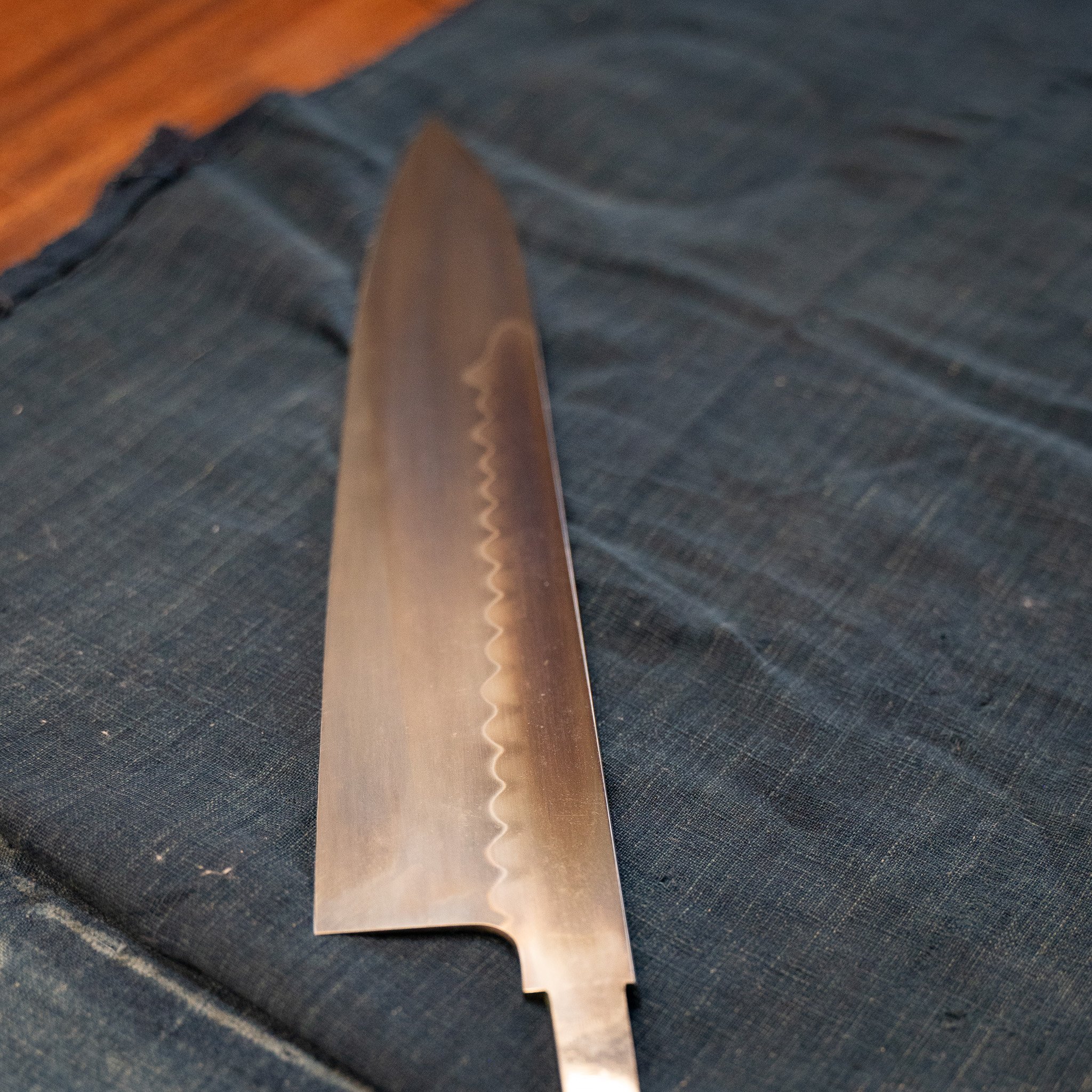Honyaki Part 1
It has been 18 years since I visited Mr Ashi in Sakai and became inspired by his Honyaki Gyuto. His work remains exhilarating to look at and it sets the bar for any attempt to produce blades in this style very high indeed. However, I have decided that Its finally time to start offering a version of my own.
This is not because I have mastered the art of Honyaki in secret and can now create knives equal to those of Mr. Ashi. My current offering is clearly not at that level. However the experience gained by making thousands of forged blades over the last (almost) two decades is a solid foundation. And I have been gradually developing my process in the background, with guidance from Ashi-san.
Takeuchi-san, who is a connoisseur of Japanese ceramics says that a potter should not even attempt to make a tea bowl until they are 60 years old. A tea bowl is an expression of self that requires time-lived and aesthetic maturity. I suppose I intuitively felt this way about Honyaki but since I am American, I was only patient enough to wait until I am 40. So it is time to start sharing the results and hopefully the support of my customers will allow me to commit more time and energy to this style of blade than I could while keeping it on the back burner. The counnoissuers may wait to see what I’m making in twenty years, if they wish.
Signature Honyaki Gyuto By Ashi-san
Honyaki are relentlessly unforgiving at almost every step. The forging and heat treatment must be done just so or the Homon will not turn out clearly. At this point, I am finally getting clarity and luminosity that is close to what I desire. However, sometimes I still get a bit of activity away from the Habuchi (transition area) which I consider imperfections. It’s true that Ashi, Nie, Nioi etc (I don’t pretend to have a full understanding of the terms used in sword polishing) can add to the beauty of a blade, but only if they arise consistently along the Hamon in an aesthetic way. If that is not the case, it is much better that the blade be clear with only the line of the Hamon distinctly visible. Achieving this requires uniformity of the microstructure after forging, uniformity of the clay application, and uniformity of the heating and cooling during hardening. As I mentioned before, some of the blades in this first offering were forged years ago and have visual artifacts that I consider imperfect. But each one taught me a lot, right to the final step and I have judged them good enough for the initial release. Hopefully the hamons will improve over the coming years.
Tsuchi-Oki, the clay placement is the heart of Honyaki. For me, this step is where the magic is. I use a mixture of local clay from the hills north of Santa Fe and some byproducts from around the shop. When I was in Japan a lot of folks used the clay used for setting roof tiles but in some regions people said that the clay used for roofing didn’t work well. I guess some clay works better than others but its not a super specific thing, either. The clay just needs to dry without cracking and stick well enough to withstand the shock of quenching. One thing I don’t care for is any kind of commercial refractory cement or modern heat treating products. While pragmatism guides my feelings more than mysticism, its very different to use things that come straight from the place you are working, like the dirt beneath your feet and the soot from your chimney, than to buy a plastic tub a goop from the hardware store.
The placement itself is a meditative process that is different from any other part of knifemaking. The potential for exploring various forms and patterns is endless and inspring. So far, since the blades were essentially heat treatment experiments (many ending in the scrap bin) I have kept the Tsuchi-Oki very simple. I look forward to spending more time and thought on this in the future.
Without a doubt, the most unforgiving part is the polish. Without a good polish, the Hamon will appear as a chalky area that really doesn’t do the Honyaki tradition justice. And while I did some mirror finishes at Ashihamono when I was there, its a whole different thing to set up your own system for this kind of work. To start with, the grinding room has to be clean and all polishing products kept in separate containers. Then there are dozens of products that can be used in endless combinations. You could try Tripoli buffing compound but then you have to decide if you will use it with cork, felt, linen, leather, loose cotton buff, spiral sewn, etc… each giving a different result. And to further complicate the process of dialing in a system, it takes a long time and a lot of compound to get a buffing belt or wheel properly charged. One of my current frustrations is the amount of buffing chatter visible on the blade. My theory is that this will dissipate as my polishing equipment breaks in. Maybe thats wishful thinking. At any rate, polishing is the area where I need to improve most. I am getting results that show the Hamon but, by the very high standards set by Ashi-san and others, I will need to get better.
Even with the blades fully masked with tape, the handling protocol is far more fussy than for blades with a 240 grit finish. I have elected to do the handle installations for Honyaki with traditional Italian sealing wax. It melts at a lower temperature than hot glue and it cleans up without solvents or sharp tools. These factors make it easier to install and de-install. since honyaki are liable to require regular refinishing and don’t get used hard, this is an advantage. That is to say, it is a theoretical advantage. If people find that its melting while in the back seat of their car on a summer day, I will have to reconsider.
Once again, the general cleanliness of the shop comes into play and I find that these finishes can get scratched without even knowing how or when (while taking photos, for example). Gradually I will eliminate these issues as I adjust the shop and my own habits to accommodate the touchiness of mirror polish. For now, I have to move forward with releasing this batch. And while I acknowledge the flaws and short comings, I am excited to finally share this style of work with my customers.












